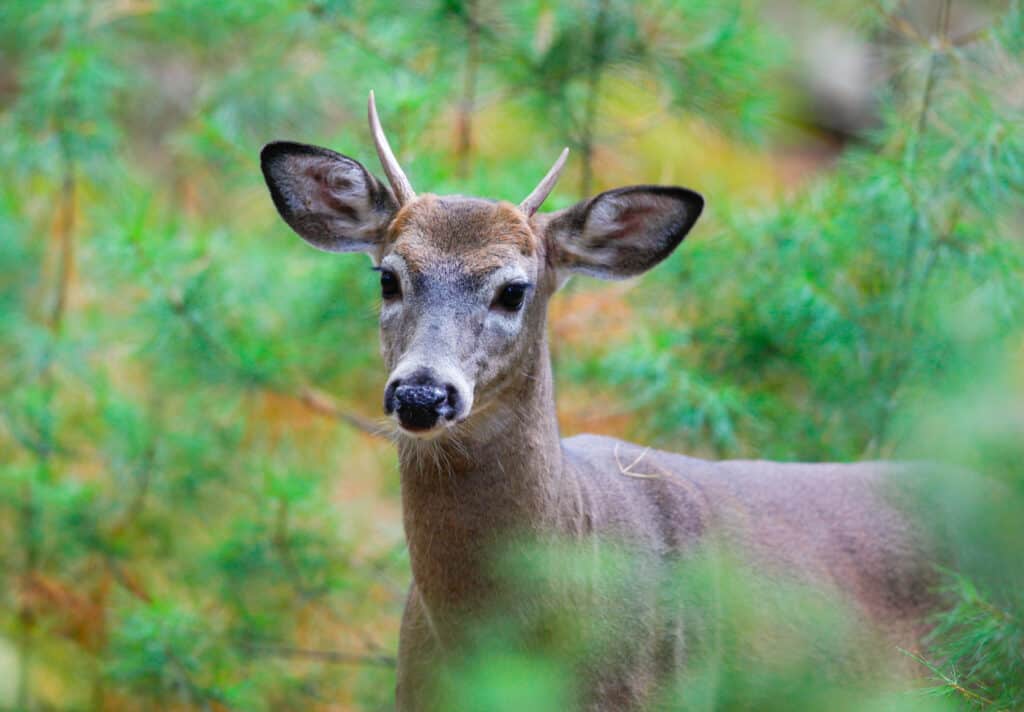Continue reading for our analysis...

With a name like the ‘Deer Whisperer,’ it’s no surprise that this account shares footage of up-close encounters with deer. It features Lynn Smith, who, according to his website, feeds around 2,000 pounds of protein, corn, and soybean mix per month to the deer. He lives in Austin, Texas, and started feeding the white-tailed deer in April 2020. Scroll down to watch the full video of this charming encounter.
Where Do White-Tailed Deer Live in the US?
According to the Texas Parks and Wildlife Department, white-tailed deer (Odocoileus virginianu) live in many areas of the US. There are probably between 25 million and 35 million in total. In Texas alone, there are an estimated four million, with another one and a half million in Alabama.

White-tailed deers are often seen in urban areas
©iStock.com/Louise Wightman
The deer gets its name from the white patches found behind its nose, around its eyes, inside its ears, over its chin and throat, and, of course, beneath its tail. White-tailed deer can live alone or in herds. They like wooded and brushy areas and mainly feed on woody plants (forbs). Unlike some other deer species, they do not migrate and instead remain in a fairly fixed geographical area.
Is Feeding Deer Safe?

Feeding deer seems like a generous thing to do, but it is controversial. Some authorities have warned that even the gentle white-tailed deer can be aggressive under some circumstances. This is most likely to be a female protecting her fawns or, more rarely, a male during the rutting season.
There are numerous major drawbacks associated with feeding deer, and 22 states have a partial or total ban on supplemental feeding of deer. By feeding them, we encourage large numbers of animals to congregate in one place. This provides opportunities for the transmission of diseases such as blue tongue disease or epizootic hemorrhagic disease (EHD).
Furthermore, supplemental feeding encourages overpopulation, which can eventually lead to starvation as the habitat cannot sustain that many animals. Finally, the deer get accustomed to humans and lose their fear of them. Having wild animals walking up to unsuspecting people can get them killed. Encouraging animals to go out of their natural range to feed causes them to cross roadways, where they get hit by motor vehicles more often. They also start to frequent gardens where they eat landscape plants and garden vegetables. Not everyone is exactly pleased about this!
Thank you for reading! Have some feedback for us? Contact the AZ Animals editorial team.







